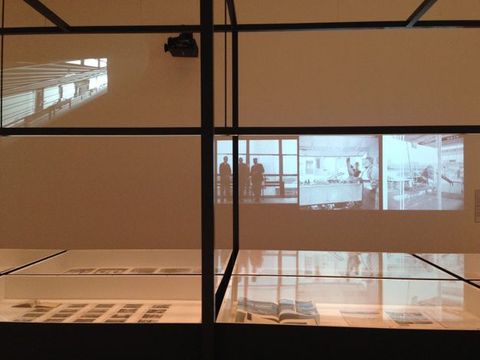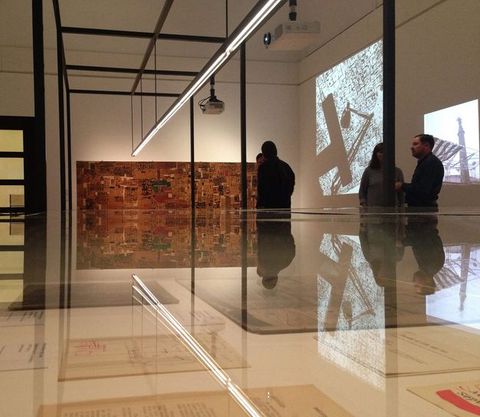New Brutalist Image 1949–55
New Brutalist Image 1949–55: “Atlas to a New World” or, “Trying to Look at Things Today”
By Claire Zimmerman And Victoria Walsh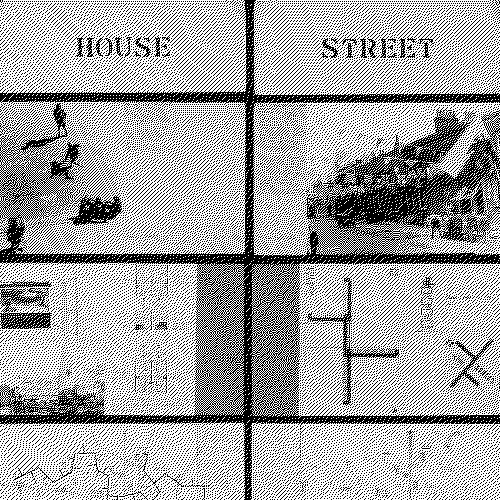
The Photographic Image
In November 2014 the display New Brutalist Image, 1949–55 opened at Tate Britain (figs. 1, 2).1 Co-curated by the authors of this Look First feature, the display centred on a reconsideration of two key icons of the New Brutalism: Hunstanton School, completed in Norfolk in 1954; and the exhibition Parallel of Life and Art held at the ICA, London, in 1953. Even though the building and the exhibition shared creators, executors, and documentarians, subsequent criticism had obscured the historical relationship between them. In our display, we considered differences between these projects, yet we also revealed shared concerns around the question of communication through photographic images, identifying a communicative “language” that lies somewhere between syntax and lexicon.
1Architects Alison and Peter Smithson designed the school and collaborated with sculptor Eduardo Paolozzi and artist-photographer Nigel Henderson on the exhibition, and on photographic documentation of the school under construction (figs. 3, 4). Both projects benefited from the input of Ronald Jenkins, an engineer from Ove Arup and Partners (fig. 5). The results of multiple interactions around these events were both interdisciplinary and aimed to connect the media in which each collaborator worked. In a similar spirit of intermedial conjoining, architectural critic Reyner Banham situated the Hunstanton School in relation to heterogeneous works subsequently associated with New Brutalism in articles of the early 1950s. Hunstanton, visually anomalous to the more materially messy, a-formal, and visceral illustrations of other work cited by Banham, including images by Henderson, nonetheless sat side by side with a shot of Parallel of Life and Art.
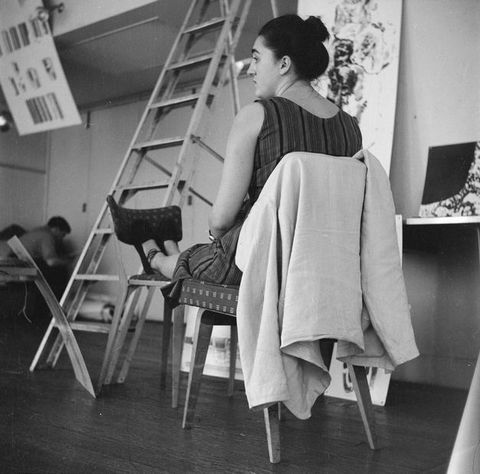
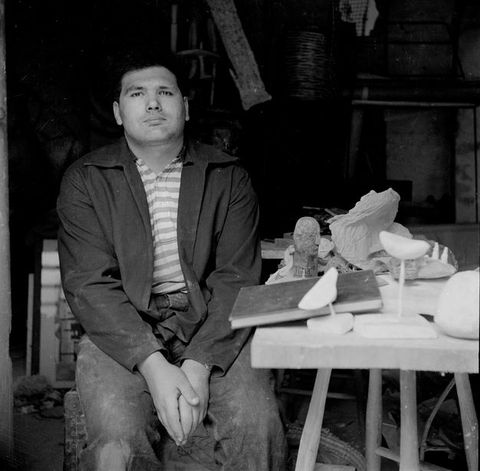
The Tate Britain display examined the photographic image-making that underpinned and bound New Brutalism in its earliest development. The term we put forward in this exhibition and re-use again here—“New Brutalist Image”—positions photography as a primary medium of communication and the photographic image as a remediating tool intended to synthesize the rampant disjunctions of contemporary culture. As Banham noted in his review of Parallel of Life and Art:
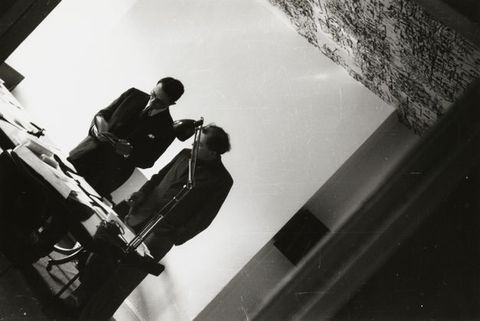
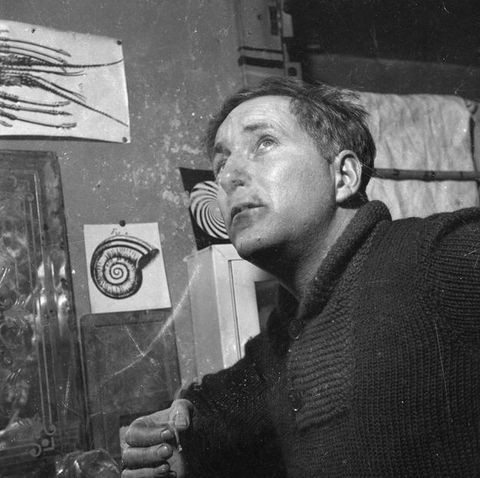
For this brief moment, the remediating work of the photographic image sought to overcome disciplinary and practice boundaries across art, architecture, design, and everyday life, encoding a manner of communication that might compete with the printed word. By recreating part of the exhibition digitally, we are able to present the photograph as “image”, suspending it from its predominantly indexical status, acknowledging its potential as a primary tool of argument. We have organized the images according to predominant features such as patterning, framing, and choreography—so, in other words, in terms of form and narrative. They are shown in a “triptych” in which the reader is invited to find relevant connections among images in the reel, and with those in adjacent reels. The presentation calls upon the reader to view these images as “trying to look at things”, which defines our concept and analysis of the New Brutalist image.
“A Kind of Rosetta Stone”
In his article “The New Brutalism”, Banham purposefully illustrated the concept through a gridded arrangement of images including a photograph of Hunstanton School, the Smithsons’ designs for a Soho House, the work of Paolozzi, and an image of the exhibition Parallel of Life and Art (fig. 7).4 Collectively, these illustrations reflected for Banham a new interest in the patterns and “overtones of human association”, introducing “images of human as well as formal value” which manifested in three key characteristics of the New Brutalist aesthetic: “memorability as an image”; “clear exhibition of structure”; and “valuation of materials ‘as found’”. Banham’s inclusion of Parallel of Life and Art as a “locus classicus” of New Brutalism engaged with the five collaborators’ own ambitions and their claims that the exhibition offered a new account of the impact of photography on cultural sensibility. The members of the group (who positioned themselves as “editors” of the material) reiterated these ambitions in notes and articles on the exhibition, from which we culled phrases such as “Indications of a new visual order” and “a new attitude” (figs. 8, 9).
4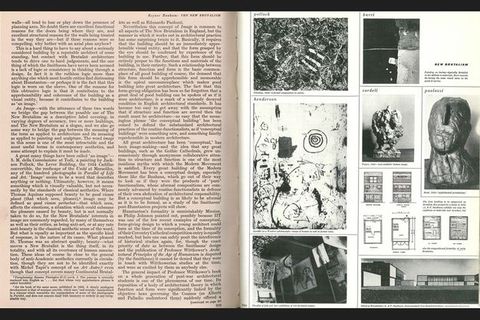
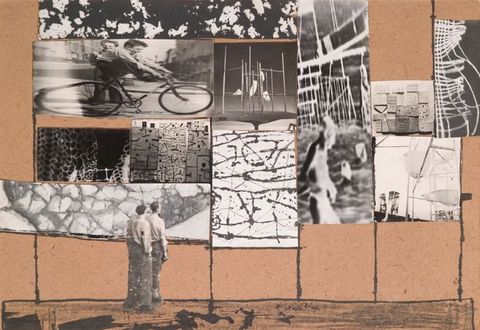
The inclusion of illustrations taken from the linguist and palaeographer David Diringer’s ground-breaking work The Alphabet: A Key to the History of Mankind (1948) in Parallel of Life and Art highlighted the level of interest in understanding the photographic image as a new visual language, a new key to understanding the present. To be understood neither as indexical document nor as fetishized object, but rather relationally, the photograph communicates through visual cross-relationships produced by physical juxtaposition and visual layering, here created by the triptych of continually changing images. Nigel Henderson described the radical installation of Parallel of Life and Art as “a punchy visual matrix that triggered off a number of associational ideas”, while the Smithsons wrote, “This exhibition will provide the first atlas to a new world . . . the method used will . . . present a dramatic yet rational picture of the times, a kind of Rosetta Stone.”5 Framing the visual within a matrix while simultaneously calling on and calling out to an ever-expanding field of visual communication, these members of the “Independent Group” (the Smithsons, Henderson, and Paolozzi, with Jenkins and Banham as honorary members) presumed an active spectator making sense of a newly saturated image environment.
5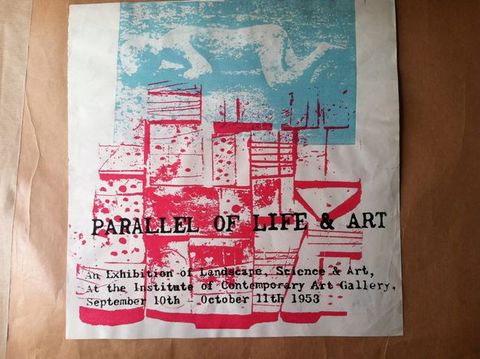
Frame – Field – Stage
The selection presented here interrogates relations between images in the set of Henderson photographs. How well they framed their subject, the degree to which pattern persisted across the field of the image, and how well they set up or “staged” events within the picture provided criteria of selection. Identifying strategies within the photographic archive amassed by Henderson in his collaborations with other members of the group, we found similarities among images included in Parallel of Life and Art, photographs of Hunstanton in various stages of completion, and in the design of the building itself. These strategies also resonated in the sculptural and graphic work of Paolozzi and in the larger corpus of work by others, and structured their interface with contemporary culture.
Firstly, frames, grids, and framing the image were a means to organize ideas visually through juxtaposition (the grid); an artistic device (photographic image); and an architectural device (the structural frame). Images exhibiting these strategies are those in which the primary visual impression comes either from the overall framing of the image or from the operations of frames within it. Often these two coincide. Here, the potentially limitless continuity of certain images is intentionally cut by a geometric device, one generally based on an orthogonal grid, but not always. Important, though, is the sense that the image has been made by a conscious intervention with a frame or a framing device. This is not the image “as found”, but rather the beginnings of a staged or constructed image (fig. 10).
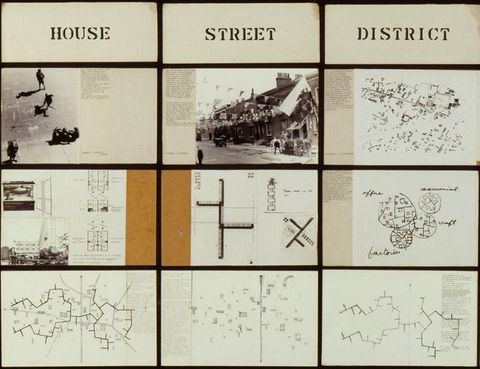
The second strategy is visual patterning: images in which the primary visual impression comes from overall, repeating, or episodic graphic patterns. The selection emphasizes similarity between patterns, thereby constructing a comparative frame of reference. Mark-making predominates within the boundary of these image fields—but sometimes also implies continuation in the “off-stage” or out of frame as well. A “cut” from the potentially limitless expanse of a visual continuum is critical to the way these images function. It resonates with contemporary debates on “endlessness” in modern architecture, pursued at this time by British architects working from precedents set by interwar modernists. It also meets its parallel in the critical discourse of a-formalism and the multi-evocative image in the art criticism of the time. Notably, visual patterning characterizes the graphic rendition of the Smithsons’ urban schemes for housing clusters as much as it does Paolozzi’s sculptures and Henderson’s image-making.
The third, “staging”, is a visual strategy where the primary visual impression of framing or patterning is somehow disrupted by the active presence of animals, human figures, or objects within the image, so that the viewer perceives space, image, object, and/or event simultaneously, in the manner of a display. These are images in which a narrative element may add complexity to formal strategies such as patterning and framing. These images often depict deep space (deeper than those in the first two categories), and are more likely to include bounded objects. They often include frames and patterns, but to these visual components they add another element based on active visual engagement, whereby the viewer’s attention is summoned by composition and manner of presentation.
In highlighting these visual strategies through the curation and changing sequences of these selected images and within a grid of three, this presentation brings to the fore the visual lexicon of New Brutalism that Banham identified with his own set of terms: “memorability as an image”; “clear exhibition of structure”; and “valuation of materials ‘as found’”.
1952

In researching apparent disjunctions between Hunstanton School and Parallel of Life and Art (conceived and executed nearly simultaneously) the critical role of Arup engineer Ronald Jenkins emerged. In the post-war separation of art and architectural history, and the further separation of both from science, Jenkins’s work with the Smithsons on Hunstanton, and his design of the matrix of wires on which Parallel of Life and Art depended, have gone unremarked until recently. An interview with Jack Zunz, starting draftsman on the Hunstanton project, revealed that Jenkins, an acknowledged technical innovator, catalyzed his young collaborators by commissioning a major refurbishment of his Fitzroy Street office in 1951. As a future article in Tate Papers will detail, Jenkins’s office is not only historically important for its commissioned elements—ceiling wallpaper by Paolozzi, furniture by the Smithsons (with Victor Pasmore) and photographs by Henderson—but also because it functioned as a pilot project for Parallel of Life and Art; allowing art, architecture, design, and science to converge within a single visual environment (figs. 11, 12). Zunz recalled Paolozzi’s 1952 pitch to Ove Arup for an exhibition, presented through an epidiascope show of disparate photographic material that included images finally selected for Parallel of Life and Art, but that left Arup mystified (fig. 13). From this early moment, collaborative work rooted in photographic communication tied art, architecture, design, and engineering together. This approach to a period newly saturated in images anticipated the conversion of the post-war “scrapbook” phenomenon to the image-banks of digital archives. This provides an opportunity to reconnect historical visual relations, digital image-making, and contemporary interest in the convergence of disciplinary knowledge and cultural practices.
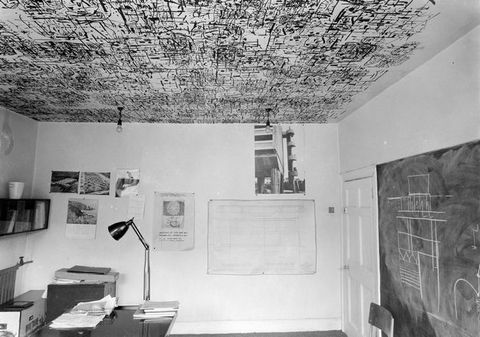
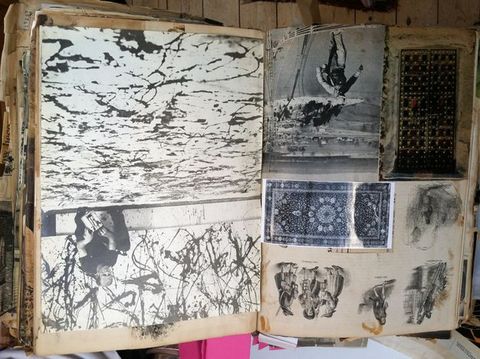
The aim of this research and article has been to refocus scholarly attention on the operations of photographic images in relation to the heterogeneous practices of seeing and viewing which underpinned the cultural sensibility and work of this group of collaborators, and the wider group of practitioners in which they moved as artists, architects, and designers. Starting with the noted disjuncture between Parallel of Life and Art and Hunstanton school, our research—both visual and archival—has reconstructed the inherent relation between these two manifestations of New Brutalism by the same group of actors (fig. 14). Like Banham, we must next assess the efficacy of the model they left behind."
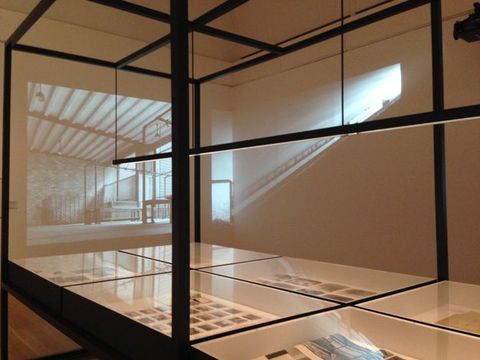
About the authors
-
Victoria Walsh is Head of the Curating Contemporary Art programme at the Royal College of Art where she is Professor of Art History and Curating. She has published widely on post-war British art, particularly in relation to the Independent Group, and curated the exhibitions and projects Richard Hamilton (Tate Modern, 2014) and Parallel of Life and Art: Nigel Henderson (2001).
-
Victoria Walsh is Head of the Curating Contemporary Art programme at the Royal College of Art where she is Professor of Art History and Curating. She has published widely on post-war British art, particularly in relation to the Independent Group, and curated the exhibitions and projects Richard Hamilton (Tate Modern, 2014) and Parallel of Life and Art: Nigel Henderson (2001).
Footnotes
-
1
New Brutalist Image, 1949–55, Tate Britain, 24 Nov. 2014–20 Sept. 2015. For selected research towards this display, see V. Walsh, “Reordering and Redistributing the Visual”, Journal of Visual Culture 12, no. 2 (Aug. 2013): 222–44; C. Zimmerman, Photographic Architecture in the Twentieth Century (Minneapolis: Univ. of Minnesota Press, 2014), Chapters 8 & 9. ↩︎
-
2
Reyner Banham, “Photography: Parallel of Life and Art”, Architectural Review, 114 (Oct. 1953): 259–60. ↩︎
-
3
The majority of images presented in the slideshow above are archival images from The personal papers of Nigel Graeme Henderson (1917–1985), a collection acquired by the Tate Archive from Janet Henderson and the Henderson family in 1992. Black and white negatives in the papers were digitised as part of Tate Britain’s 2013–18 'Archives & Access’ project, supported through a £1.9 million grant from the Heritage Lottery Fund. Other images are courtesy of Nigel Henderson Collection and Smithson Family Collection. ↩︎
-
4
Reyner Banham, “The New Brutalism”, Architectural Review 118, no. 708 (Dec. 1955): 355–61. ↩︎
-
5
Alison and Peter Smithson, “Sources” document for Parallel of Life and Art exhibition, Smithson Family Archive. This document is also the source for the phrase “trying to look at things today”. ↩︎
Imprint
| Author | |
|---|---|
| Date | 28 November 2016 |
| Category | Look First |
| Review status | Peer Reviewed (Editorial Group) |
| License | Creative Commons Attribution-NonCommercial 4.0 International (CC BY-NC 4.0) |
| Downloads | PDF format |
| Article DOI | https://doi.org/10.17658/issn.2058-5462/issue-04/vwalsh-czimmerman |
| Cite as | Zimmerman, Claire, and Victoria Walsh. “New Brutalist Image 1949–55: ‘Atlas to a New World’ or, ‘Trying to Look at Things Today.’” In British Art Studies. London and New Haven: Paul Mellon Centre for Studies in British Art and Yale University Press, 2016. https://doi.org/10.17658/issn.2058-5462/issue-04/vwalsh-czimmerman. |
